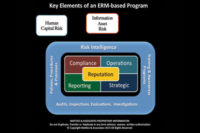There are many methods, programs and systems to track your assets and prevent loss, however one of the most important and overlooked practices is a well-structured exit interview. When an employee is retiring, resigning or being dismissed, the exit interview should be as important as the hiring process when tracking and preventing asset loss.
The hiring process is an essential start to any robust loss prevention program, and allows the company to track their assets. During the hiring phase, the company may provide employees with uniforms, access cards, keys, passwords, vehicles, parking passes, gas cards, cellphones or any other company property that is necessary for the employee to perform their job description.
The initial employment process is very proactive with regard to assigning company property to a new employee. It is necessary, at this point, to record all pertinent information about the property assigned to that employee in multiple logs or databases. A complete and thorough document detailing the responsibility and receipt of the items issued should be signed by the employee as well.
The new employee should also sign a document indicating that he or she understands the company policy with regard to the loss of, or damage to company property issued to his/her care, custody and control. Further, the employee should understand and sign to acknowledge that the property must be returned when retiring, resigning or upon dismissal from the company. A best practice to follow is to have the original signed documents placed in the employee’s personnel folder. This practice will assist in tracking and recovering these assets at a later time and will provide the employee with the knowledge that any damage to or loss of issued property will call for immediate reimbursement to the company.
Collecting and maintaining accurate records of confidential information, trade secrets, non-compete and non-disclosure contracts or agreements, in addition to any tangible assets are time consuming and expensive, but not as costly in the long run to a company’s profit and loss statement. When tracking and preventing loss, what better way to ensure that your assets are protected and returned in the same condition and proper working order than by conducting a comprehensive exit interview by verifying the assets and cross referencing them with the acknowledgement and possession memorandum?
The importance of conducting a complete exit interview is not only to track and protect the company’s fixed assets; it allows management to learn of or about any issues, problems or grievances that could affect future loss. The exit interview will create a forum for an open dialogue that will permit the employee to speak freely to management and identify or explain any problems or complaints they may have. Learning from the interview and investigating any possible problems or concerns and correcting or addressing them will benefit the company by reducing liability from future asset loss and exposure to possible legal liability issues.
During the conversation as an active empathic listener, management will create an opportunity to help reduce loss of company assets, by going back to the employee personnel folder and using a property return form and check list to ensure that all company property is accounted for.
Tracking tangible assets following the practices above will help reduce loss of company assets however, the exit interview’s vital function is to remind the employee of his or her legal obligations with regards to non-compete or non-disclosure agreements. The goal of conducting a comprehensive exit interview is to maximize your asset control efficiency and minimize your potential for loss. The reminder of the employee’s legal responsibility should be in writing and more importantly signed by the employer and employee and placed back in the employee’s personnel folder so that the document is readily available in the event of future litigation.
The exit interview should not end there, a strong management team should record all exit interview responses and track any trends and implement corrective actions immediately. A comprehensive exit interview that is structured and conducted consistently by an active listener is one of the best ways to prevent loss and track assets if the information is used in a proactive corrective manner.



